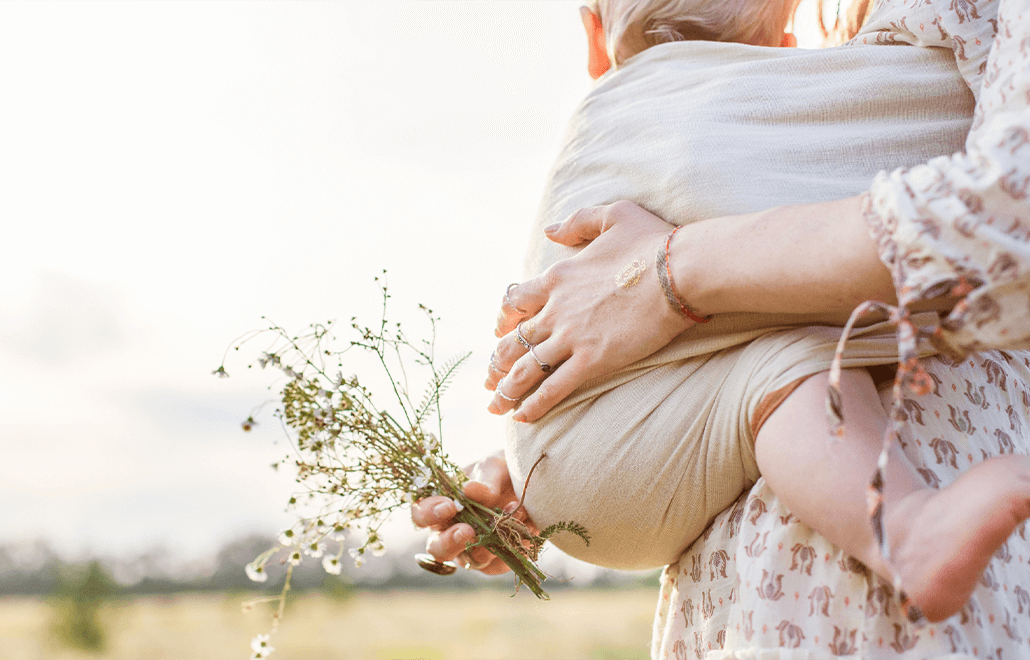
26 Apr Babywearing 101: Benefits, Types of Carriers, and Tips for Safe and Comfortable Babywearing
Babywearing has become increasingly popular in recent years, and for good reason. Not only does it provide a convenient way to keep your baby close, but it also has numerous benefits for both the baby and the caregiver. In this blog post, we’ll explore the benefits of babywearing, different types of carriers, and tips for safe and comfortable babywearing.
Benefits of Babywearing
Bonding: Babywearing allows for close physical contact between the baby and caregiver, promoting bonding and attachment.
Convenience: Babywearing allows for hands-free parenting, making it easier to complete tasks while still caring for the baby.
Comfort: Carriers provide a comfortable and secure place for the baby to rest while allowing the caregiver to maintain proper posture.
Sleep: Many babies sleep better when worn in a carrier, which can also help regulate their sleep patterns.
Health: Babywearing can promote the healthy development of the baby’s spine, hips, and pelvis, as well as aid in digestion and reduce colic symptoms.
Types of Carriers
Wraps: Wraps consist of a long piece of fabric that is wrapped around the caregiver and baby, providing a custom fit. There are several types of wraps, including stretchy, woven, and hybrid.
Ring Slings: Ring slings consist of a long piece of fabric with two rings attached to one end. The fabric is threaded through the rings to create a secure and adjustable carrier.
Soft-Structured Carriers: Soft-structured carriers have a structured waistband and shoulder straps, providing support and comfort for the caregiver.
Mei Tais: Mei Tais have a structured waistband and shoulder straps like soft-structured carriers, but the fabric is tied around the baby to create a custom fit.
Tips for Safe and Comfortable Babywearing
Check the weight limit of the carrier and ensure that the baby is within the weight range.
Ensure that the carrier is properly adjusted and secure. Follow the manufacturer’s instructions for proper use.
Check that the baby’s airway is clear and that its chin is not tucked into its chest, which can restrict breathing.
Avoid any activities that could be dangerous while babywearing, such as cooking over an open flame or using power tools.
Dress appropriately for the weather and consider the baby’s clothing needs as well.
Take breaks as needed to allow for movement and stretching.
Be mindful of your posture and ensure that your back is properly supported.
In conclusion, babywearing has numerous benefits for both the baby and the caregiver, including bonding, convenience, comfort, sleep, and health. There are several types of carriers to choose from, including wraps, ring slings, soft-structured carriers, and Mei Tais. To ensure safe and comfortable babywearing, it’s essential to follow the manufacturer’s instructions, check the weight limit of the carrier, and be mindful of the baby’s airway and posture. At Continuum Pediatrics, we are committed to providing personalized care to newborns and infants, and our team of board-certified pediatricians can provide guidance and support to parents who may have questions about babywearing or other parenting practices.

